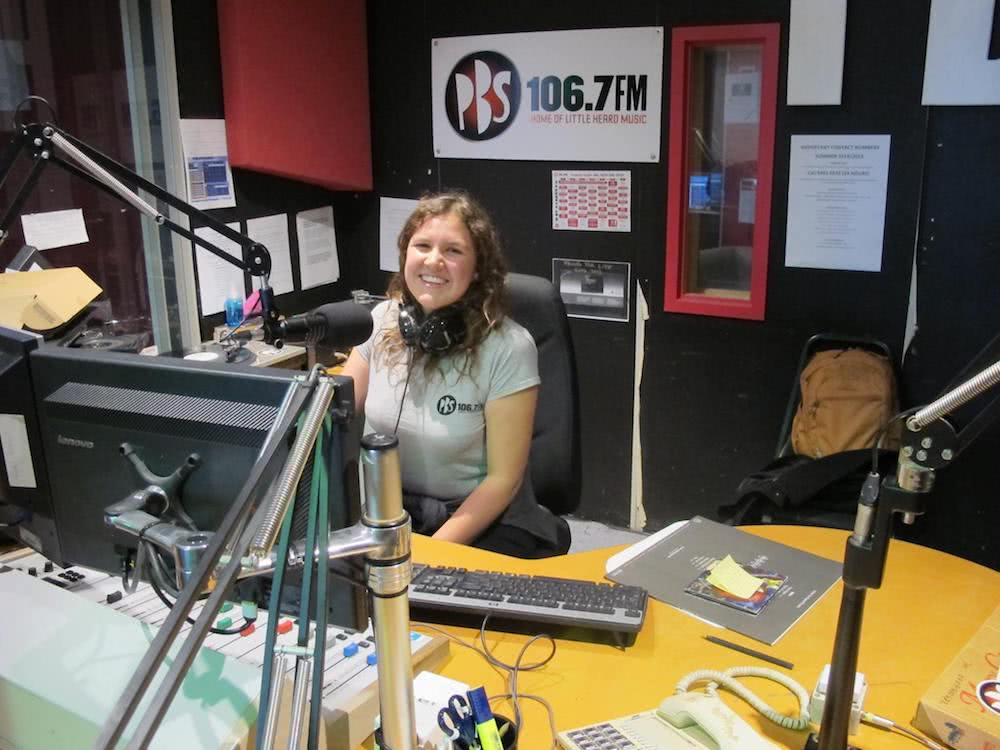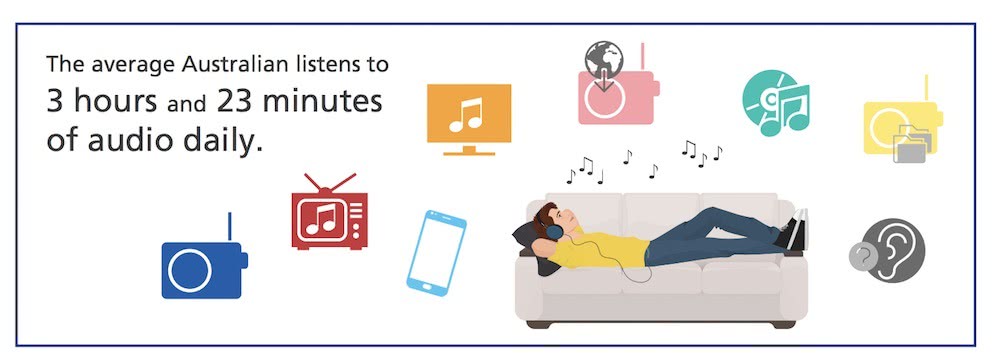Community radio is growing the music industry

What makes Melbourne’s music scene so productive and alive is the combination of musicians, live music venues, and community radio.
For the twelve years I have been broadcasting on community radio in Melbourne (PBS 106.7FM specifically), I’ve felt the sector jostle and grapple with new technologies, music formats, listening mediums and behaviours.
‘Who knew radio would survive, huh?!’ is an often-heard celebration and prayer. Despite these changes, radio is still here. But not all radio is made equal when it comes to supporting local music, musicians and industry.
I moved to Melbourne from regional Victoria in 2005, for university and for music in almost equal measures. It was through community radio that I came to feel a part of Melbourne’s thriving music scene, made up of many and various music communities.
Listening to community radio supported, perhaps even enabled, my gig-going, crate digging, music purchasing, and my sense of participation and acceptance in a wider community. And broadcasting on community radio enabled me to contribute support and give back to local and national musicians, venues and labels.
Since my early community radio days, radio has remained, and continues to grow as, an important site of ‘audio entertainment’ in Australia. Research facilitated by the commercial radio sector in 2016 and 2017, the Share of Audio study, shows that radio listening still dominates audio entertainment, sitting well ahead of music streaming, online music videos, and podcasts as the leading audio platform in Australia.

Maddy Macfarlane
Undoubtedly these behaviours are changing rapidly, and a 2018 study would reflect that, but the growing diversification of ‘audio entertainment’ content and their platforms has not lessened radio listening.
The Share of Audio study acknowledges that radio is part of a diverse audio entertainment scape, however the study doesn’t breakdown what it is that listeners seek from live radio. While music forms a large part of overall audio entertainment content in the study (music streaming, watching music video clips, attending live music, as well as listening to one’s own music collection), Australian radio’s support of music and music industries, especially at a local level, varies greatly across commercial, national (ABC and SBS), and community radio sectors
In 2016 the ABC suffered significant cuts to its national music programs and staff, with all but one program being axed in a government money-saving (and culture devaluing) measure. It’s worth noting that this year, the ABC’s interstate music libraries are being consolidated, digitised and moved to Melbourne, so ABC radio and television’s access to these music resources, and their librarians, will be reduced again.
And it has long been known that commercial radio has hidden its Australian music content, of which commercial radio has a 25% quota, in its midnight hours of airplay. New research by long-time music publicist Chrissie Vincent submitted as part of a Masters degree this year reveals that Australian commercial FM radio is actually failing local acts by frequently not even reaching this quota. Vincent’s powerful research has prompted an integral national review.
Community radio’s 2017 National Listener Survey also shows an overall growth in radio listening, with community radio’s listenership reaching a record high of 5.362 million weekly listeners. The National Listener Survey has been conducted annually since 2012, and every two years since 2004.
Importantly, this survey includes a diverse population sample of over 10,000 Australians aged 15+ from metro, regional and remote areas. Compare this to the Share Of Audio survey of approximately 1,000 Australians aged 10+ from the five major capital cities only, and in its second year.
In the National Listener Survey, the top three reasons Australians give for tuning in to Community radio is for local news and information, specialist music, and local voices and personalities. Community radio audiences specifically identify music as a top reason they listen.
As a relatively long-term community radio broadcaster, it doesn’t surprise me that community radio performs such an important role in Australia’s radio-scape by supporting local music and music industries. Community radio not only fills the gaps that the national broadcasters cannot, and that commercial radio seems to create, it actively champions local music and contributes to the health and vitality of local music scenes/ecologies.
Community radio’s dedication and passion for local music and industry is ingrained in its radio licence, which stipulates that community radio shall support local and underrepresented news, perspectives, music and culture [cbaa.org.au]. Community radio stations are born valuing local and Australian music.
In supporting local music as a core value, PBS enacts this across efforts that range from the general (interviews, live performance opportunities in the broadcast studio and specialised performance space, open access to announcer lockers to submit music hard copies, and email addresses for digital submissions, Australian feature albums), to the specific (PBS’s Young Elder of Jazz commission supports local, original jazz composition with a performance premiere at the Melbourne International Jazz Festival, including a live broadcast on PBS).
There are also unique contributions made by individual programs and announcers, such as PBS program All Our Stories directing and producing a CD of collaborations between local women and gender non-binary spoken word artists and electronic music producers, called Reverb on Verse. There are many other efforts, projects and training opportunities PBS makes towards this core value.
PBS is located in inner-Melbourne, a city recently named the Live Music capital of the world. This is based on two annual censuses of live music attendance that measured, among other things, the number of music venues per capita.
In this respect, Melbourne topped London, New York City and Austin as the live music capital of the world. This measure of venues per capita acknowledges the value of venues of all sizes and suburbs as contributing to a city of music.
Small or suburban venues might not match the economic contribution of large central venues, but they create an integral grass roots layer that a healthy music ecosystem requires. They provide necessary opportunities and resources that enable musicians and industry to grow.
What else contributes to Melbourne as a music city, as a live music capital? I can’t help but claim that it’s community radio, for which Melbournians are rich for choice.
There’s certainly a symbiotic relationship between community radio, musicians, live music venues and local music industry (record and instrument stores, rehearsal and recording spaces, record labels, PR and management) contributing to the vitality of music in Melbourne.
Community radio’s value of local music stems from its specific broadcasting licence, and this licence also ensures community radio’s independence in terms of content, operations, and financing. By fostering a listener community that chooses to pay voluntary annual membership dues, community radio further creates an active, self-aware and galvanised community.
My experience is of a community that values music and having their tastes challenged. A community that is self-aware of its role in the music scene they experience. A community that can band together to defend itself against poor policies, and that can also collectively devise and adopt policies to improve equity within the local music scene.
Going forward, community radio needs to realise its position as a leader in valuing and supporting local music. Community radio stations need to recognise the present situation for their local music, musicians and industry, and respond with brave programming, critical self-awareness, and pride.
You can help support PBS by becoming a member. Sign up before June 30 and go in the draw for their Radio Festival major prize. Head to pbsfm.org.au/signup
This article originally appeared on The Industry Observer, which is now part of The Music Network.































